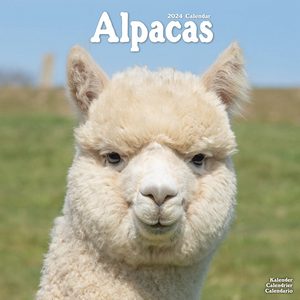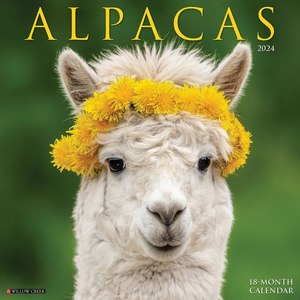2024 Alpacas Calendars
|
Home > Animals > Farm Animals > Alpacas |
|
Why buy a 2024 Alpacas Calendar? Buying a 2024 Alpacas Calendar offers a range of benefits for animal lovers and those captivated by the charm and unique characteristics of alpacas. This calendar celebrates the adorable and endearing nature of these gentle creatures with its captivating collection of images. Each month showcases the captivating beauty, fluffy fleece, and expressive faces of different alpaca individuals. Beyond their visual appeal, alpacas are known for their gentle temperament, curious personalities, and their valuable, luxurious fleece. This calendar not only adds a touch of whimsy to your space but also serves as a daily reminder of the serene, peaceful, and heartwarming presence that alpacas bring to our lives. Whether for personal enjoyment or as a thoughtful gift, a 2024 Alpacas Calendar will bring joy, admiration, and a touch of alpaca magic to every day of the year. It is an opportunity to appreciate their unique qualities, learn more about these wonderful animals, and bring a smile to your face with their irresistible charm. More about Alpacas.
The history of alpacas dates back thousands of years to the
ancient civilizations of the Andean region of South America.
Alpacas are believed to have been domesticated by the
indigenous peoples of the Andes, particularly in what is now
modern-day Peru, Bolivia, and Chile. These camelid species
were highly valued for their luxurious and soft fleece,
which was used by the ancient Andean cultures for clothing,
textiles, and other practical purposes. |



